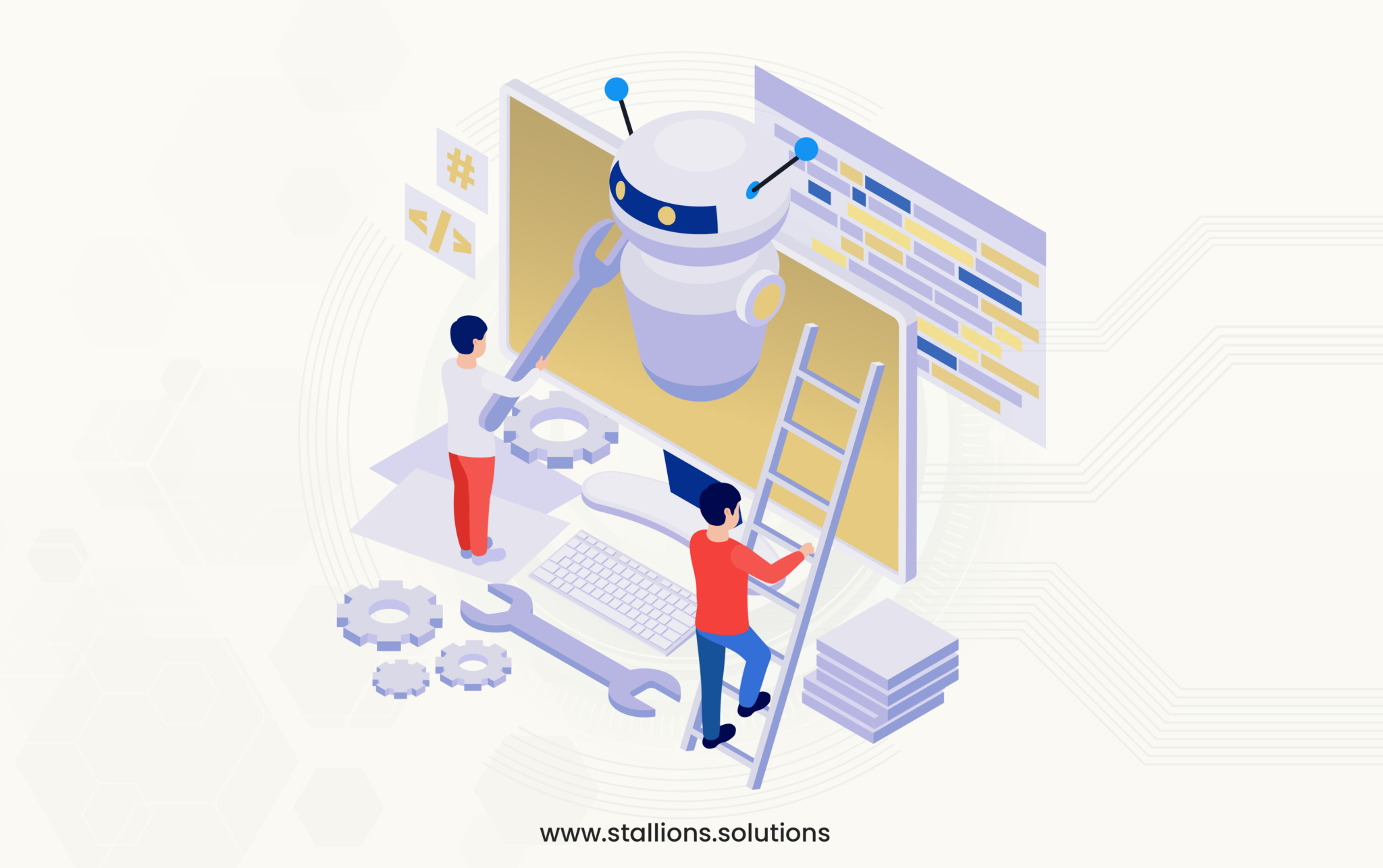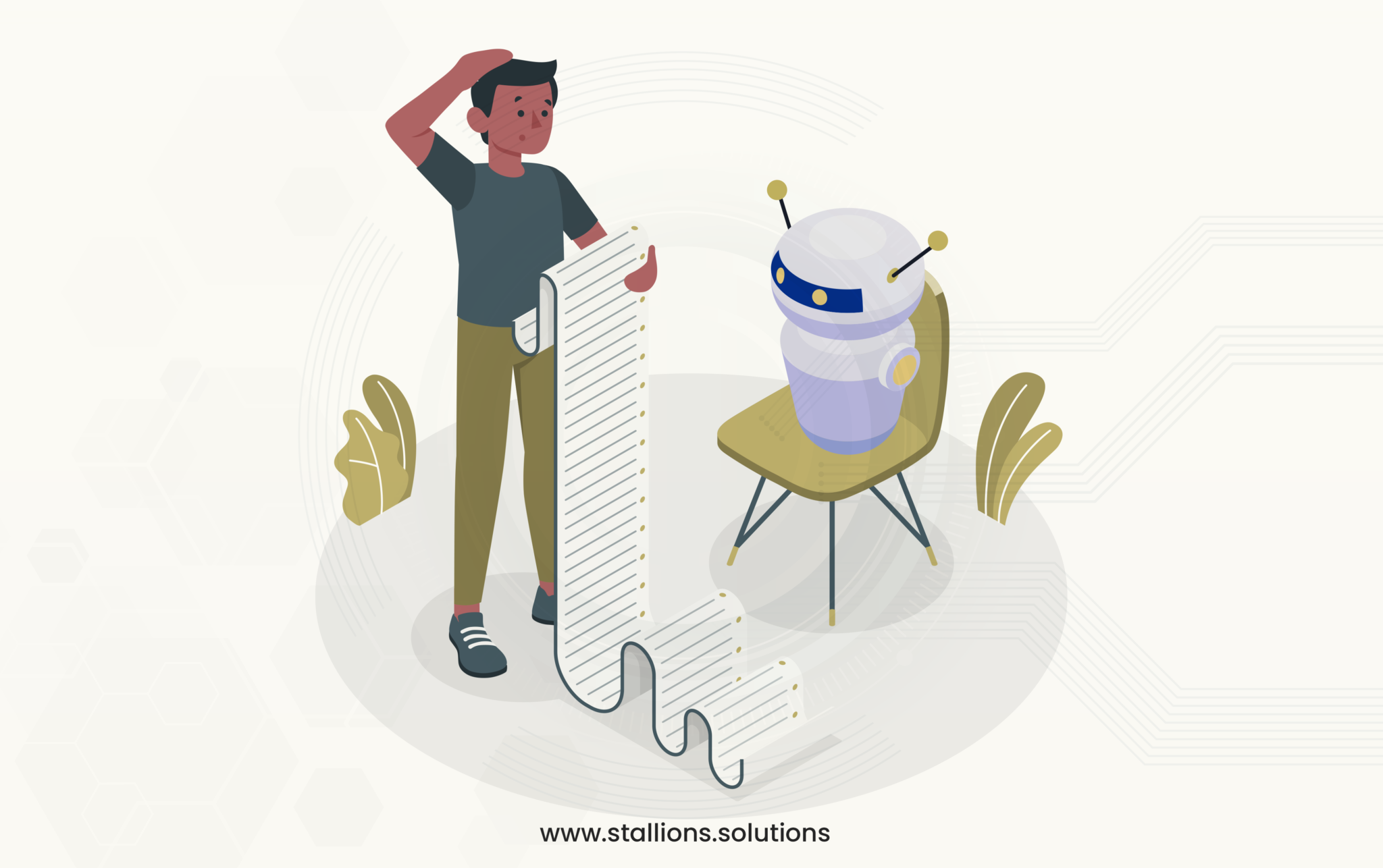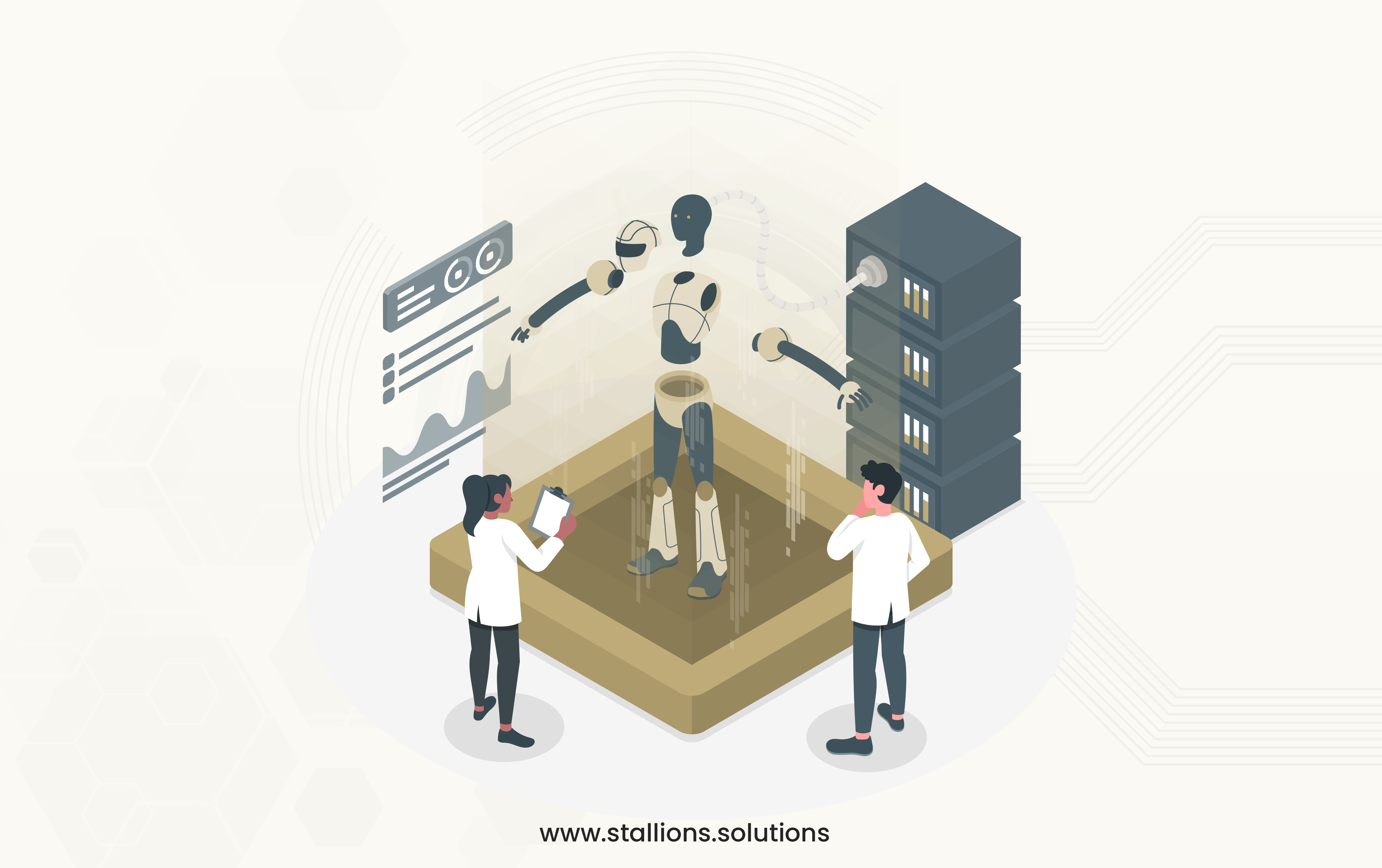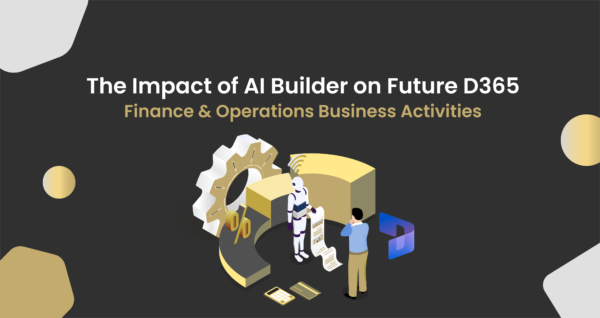As business technology rapidly evolves, medium to large enterprises are experiencing changes. Integrating Microsoft Dynamics 365 for Finance and Operations (D365 F&O) with the advanced features of artificial intelligence marks the beginning of a new age of technological innovation. If you’re looking for that groundbreaking moment in your organization’s shift to the digital era, you’re in the right place. This post delves into how medium- to large-scale businesses leverage AI Builder to enhance operations, derive insights, and boost productivity.
Overview – AI Builder

AI Builder is a user-friendly tool that democratizes using artificial intelligence within an organization. As a component of Microsoft’s Power Platform, it streamlines the extraction of insightful data and the automation of everyday tasks without the need for intricate programming. The combination of AI with D365 F&O enhances decision-making capabilities.
AI Builder and D365 F&O Integration
Integrating AI Builder with Microsoft Dynamics 365 for Finance and Operations (D365 F&O) opens numerous business possibilities. Here is a concise summary of the integration procedure.
Data Synchronization
Data synchronization maintains data consistency across many platforms, facilitating immediate data analysis and insight collection. Better decisions and more efficient operations result from removing disparate data pools and errors through this process.
Custom Model Building
You can develop customized AI models to meet unique requirements with AI Builder. These models can analyze customer ideas, extract relevant information, or recognize specific objects.
Automation
Upon the setup of your AI models, they facilitate task automation and leverage data gathered by D365 F&O to enhance the efficiency of your processes.
Real-life Scenarios
Inventory Forecasting
Let’s look at a common problem that bigger businesses often face—keeping track of inventory. Too much inventory can waste money and space, but insufficient can lead to lost sales and unhappy customers. It’s tough for big companies to keep the right amount of stock without putting in much work and analyzing lots of data.
Now for some good news: Companies like Microsoft and Builder.ai say that AI Builder makes managing inventory much easier by using technology to recognize and track items. This tool helps stores predict what they’ll need in the future by looking at past sales, what’s happening in the market, seasonal changes, and how long it takes to get new stock. This way, they can spend more time making customers happy in the store instead of worrying about inventory problems.
Vendor Invoice Processing

Handling many vendor invoices is another frequent issue for businesses, often involving tedious manual input and checks. This process is not only slow but also easy to mistakes. AI Builder simplifies this task by automating data extraction from invoices, removing the need for manual input, and reducing the chance of errors made by people.
Implementation Process and Benefits
- Building a Model for Data Extraction: A model specifically designed for extracting important invoice data, including invoice numbers, dates, amounts, and vendor information, is created using AI Builder. This gets rid of the laborious manual data entering.
- Connectivity to D365 F&O: Smoother operations are guaranteed by a flawless integration of the AI model into your D365 F&O system. This connection significantly lowers the possibility of human error while improving the accuracy of financial records.

- Managing Invoice Arrival: The integrated system effectively uses the AI model to process vendor invoices as soon as they are received. Rapid data extraction results in timely invoice processing, facilitating regulatory compliance.
- Validating Data: The system verifies the extracted data’s accuracy and highlights any inconsistencies for your finance staff to examine. Positive vendor relationships are maintained by this thorough screening, which guarantees correct and dependable transactions.
A Step-by-Step Tutorial to Using AI Builder in Dynamics 365 Finance and Operations
It takes careful preparation and execution to begin integrating AI Builder with D365 F&O for your medium-sized to large-scale company. This detailed flowchart was created to lead you through the procedure with ease.
Identify the Company’s Goals
Determine the specific business goals that D365 F&O’s AI Builder will aim to achieve.
Gathering Information
Collect and compile appropriate data from D365 F&O and other relevant sources.
Building a Model

Use AI Builder to create unique AI models that are well-suited to your goals.
Integration
Integrate the AI models with D365 F&O seamlessly to enable thorough, real-time data analysis.
Validation and Testing
To make sure the integrated system provides precise data extraction and predictions, carry out thorough testing.
Automation
Configure D365 F&O automation rules to react effectively to observations made by AI Builder.
Monitor and Adjust the System
Keep an eye on the system’s performance and make the necessary modifications for continuous optimization.
Continued Instruction
To ensure continued accuracy and relevance, feed your AI models fresh data regularly.
Conclusion
It’s evident as we enter this dynamic new stage of operations: artificial intelligence (AI) is not merely a fad; rather, it’s the game-changer that every company needs to succeed in the modern market. The road towards AI is more than just a beginning; it’s a daring step into a future where innovation becomes the driving force behind growth and rewrites the rules of business. Exciting times lie ahead! Get in touch with us to find out more about Dynamics 365 Finance and Operations and AI Builder.



